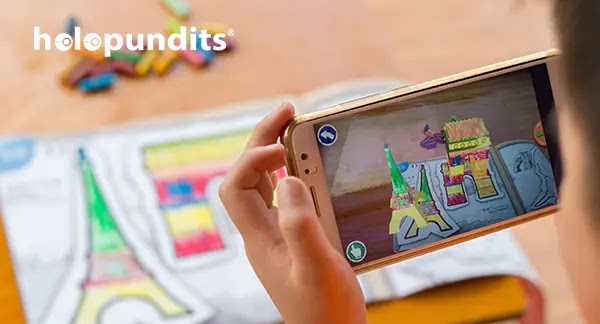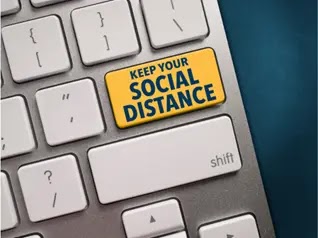How Can Augmented Reality Be Used for Education in the Classroom?

Today's complex needs require us to process a great and increasing amount of content. This intricate development has pushed the academic community to navigate from predominantly text-based content to a visual content environment. However, our educational system continues to be heavily reliant on plain text to convey the message. Augmented Reality can add immense value to the time spent by students and teachers by enriching static text-based and image-based content with rich, lucid explanations and relevant examples.
Use cases of Augmented Reality for education in the classroom
Here are some scenarios that detail how Augmented Reality can be used in education to bring static content to life.

Now let's elaborate on each of the above use cases.
1. Understanding human anatomy using AR
Students would find it difficult to appreciate the nuances of the human body by seeing 2D images in books or videos. However, interactive Augmented Reality visualization can help students learn human anatomy easily. The images can be used as AR markers which can interactively display either parts of the body or the various systems within the human body.
2. Exploring the sky and universe using AR
Using AR, one can connect GPS coordinates, 3D graphics, and the camera and provide an augmented view of various planetary objects like stars, planets, satellites, space stations, and constellations. Such an augmented view can help even a layman to better appreciate the universe.
3. Solving math problems with AR
Technology is like plastic; one can mold it and create anything as per one's requirements. Since Augmented Reality uses a phone or handheld device's camera to recognize the real world and superimpose information on top of that, AR can also be used in education to understand math problems. One can use a computational engine at the end and provide solutions for math problems in real time.
(Video Credit: Maya Adam from Youtube.com)
4. Explaining complex science topics using AR
Complex topics like how the coronavirus' "spike protein" binds to human cell receptors can be explained using an interactive AR image-based marker, which can be used on informational material. When students hover their camera on these images, the complex concepts come alive and help them comprehend those concepts better.
5. Visualizing engineering concepts in AR
Intricate concepts like steel sculptures and visualizing the effect of acoustics in engineering require in-depth and total understanding. An example of this is using a linkage mechanism to connect with multiple bodies. Now, multiple bodies can be connected in various ways. By providing an AR image-based marker, a student can better understand the various linkages.
6. Learn to paint using AR
Students can visualize how a room or painting can have multiple design patterns using AR-based apps. Such visualization can enable any student to tap into their higher order thinking skills of analyzing various options and deciding the best among them.
7. Learn using gamified content and AR
Whenever the terms AR and gaming are used together, one cannot help thinking about Pokemon Go. Using AR markers, users had to traverse different geographic terrain and collect various Pokemons. The concept of gaming has been modified and adopted in various gainful pursuits as gamification. Students can be "gratified" with points or rewards at the end of each chapter or test that they successfully complete.
9. Create and engage in virtual worlds
AR portals can help students engage and manipulate virtual objects in real space. Students can not only just interact in real space, but also create virtual spaces and interact with them, which will deepen their spatial knowledge and spatial cognition.
10. Collaborate and design infographics
"A picture is worth a thousand words" is a well-known English adage. When AR enters the picture literally and figuratively, any picture can convey more than a few thousands of words. AR can add information about the image, inside the image, and around any image. When any user scans the image, they can better appreciate the nuances and have a stronger sense of depth about the image. Such kind of layered information augmentation is not restricted to Art Appreciation classes, but any complex concept.
With such use cases, one can easily say that the future of Education is in Augmented Reality. Now let us consider such real-life situations on how we can use Augmented Reality in the classroom.
A holistic view of using Augmented Reality in the classroom
Considering the above use cases, teachers are helping their students learn better using AR in the following ways. Normally, teachers and lecturers use PowerPoint presentations to share knowledge and concepts. Using AR, these static concepts can be brought alive. An example is using Google Street View to create images from different angles. Students can scan a single image on any PowerPoint slide and look at a street's view from different angles, thus understanding how a street or streets might pose challenges when more traffic converge. Science teachers can use AR image-based markers with a directive for students to scan them and follow lab safety precautions. AR is a flexible technology that can be used for STEAM subjects as per student and teaching needs.
Concluding thoughts
Augmented Reality has come a long way since its inception. Since the technology is still being researched actively, we can hope for more compelling ways of its usage in education soon. The Covid-19 crisis and the need for social distancing have led to distance education becoming a way of student life. Creating AR content will require teachers to reskill themselves to best align the technology with education needs. With a little planning and visualizing the end learners' requirements, AR can be a versatile and exciting technology to enhance the students' learning experience.
Learn to make your classroom experience come alive with Augmented Reality



Comments
Post a Comment